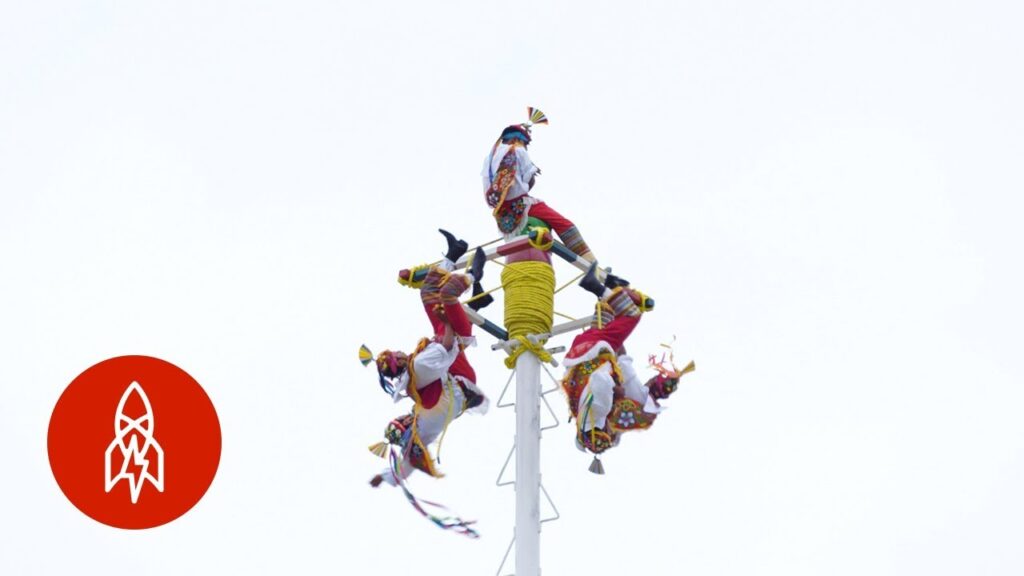Discovering the Iconic Image: Our Lady of the Iguanas
In the heart of Juchitán, Oaxaca, amidst the bustling markets and vibrant streets, there lies a photographic legacy known as «Our Lady of the Iguanas.» This iconic image, captured by the lens of photographer Graciela Iturbide, has become a symbol of Mexican heritage and strength. The photograph showcases an indigenous Zapotec woman, striking and poised, with live iguanas perched atop her head like a regal crown. This image has become more than a moment frozen in time; it represents the unique blend of indigenous culture and the natural world that is characteristic of the region.
As the story goes, Iturbide was in Juchitán documenting the way of life of the Zapotec people when she encountered the central figure of the photo, Sobeida Díaz. Sobeida was known to sell iguanas at the local market, and on this day, she had placed them on her head to free her hands. Iturbide was captivated by the juxtaposition of the reptiles’ primal features against the serene composure of Sobeida. The image speaks to the deep connection between the Zapotec people and the animals they trade, a relationship built on respect and coexistence. The Lady of the Iguanas is thus emblematic of a broader narrative that ties humans intricately to their environment.
Today, «Our Lady of the Iguanas» has been immortalized in art exhibitions and cultural retrospectives around the globe. It has sparked dialogues about gender, empowerment, and indigenous representation in the arts. As travel enthusiasts venture to Juchitán, they explore the town with the hope of capturing the spirit of this iconic image. Visitors can witness local women adorned in traditional Tehuana dresses, a sartorial statement of matriarchal society, and they might even catch a glimpse of the market scenes that pay homage to the legendary photograph. The legacy of «Our Lady of the Iguanas» endures, inviting travelers to delve deep into the heart of Mexican culture and discover its enduring stories.
The Cultural Significance of the Juchitecan Women in Mexican History
The Juchitecan women, hailing from the Isthmus of Tehuantepec in Oaxaca, Mexico, have long been emblematic figures of matriarchal strength and cultural identity. These women are renowned for their vibrant traditional attire, which often includes the «huipil grande,» a type of tunic that bursts with color and intricate patterns. Their dress and demeanor express a bold visibility and play a crucial role in preserving the rich Zapotec heritage found in this region of Mexico.
In the daily tapestry of Juchitecan life, these women are not only the keepers of culture but also the pillars of the local economy. Many Juchitecan women are adept traders and business owners, commanding respect in a society that traditionally values strong, independent women. Their unyielding presence in marketplaces, where they sell handcrafted goods, food, and art, has a longstanding history that underlines their significance in supporting and sustaining the local communities.
Their influence stretches beyond the economic sphere. The Juchitecan women are also known for their role in local governance and social norms. They have historically held positions of power within their communities, illustrating a form of societal structure quite distinct from many other regions in Mexico. Their impact in decision-making processes reaffirms the non-hierarchical ethos of their society, which values the input and insight of women highly.
Moreover, the Juchitecan women have become a symbol of feminist inspiration for many throughout Mexico and beyond. They embody a resilience and sovereignty that uplifts the narrative of women’s empowerment. Artists and intellectuals have celebrated these women in various forms of art and literature, showcasing their unique position and influence in Mexican history. The Juchitecan women continue to inspire with their assertive spirit and dedication to nurturing their cultural legacy.
Exploring Juchitán: The Land of the Iguana and Home to Strong Women
Juchitán de Zaragoza, nestled in the Isthmus of Tehuantepec in the Mexican state of Oaxaca, is a vibrant city renowned for its unique culture and rich Zapotec heritage. Often referred to as the «Land of the Iguana,» Juchitán is a place where the deep connection to the land and its creatures is reflected in local folklore and traditions. The city’s bustling markets and streets will immerse you in a colorful world where iguanas are not just common fauna, but a symbol of the region’s resilience and strength.
The women of Juchitán, known for their assertiveness and vital roles in society, manage the commerce and form the backbone of the local economy. As you walk through the markets of Juchitán, you’ll notice the commanding presence of the «muxes» – the indigenous Zapotec third-gender – often involved in the commerce and social spheres, standing proudly as a testament to the area’s progressive views on gender and identity.
A stroll around the city reveals how the local architecture is steeply rooted in Zapotec influences, with colorful buildings and murals depicting scenes of daily life, folklore, and the ubiquitous iguana. Juchitán’s crafts and textiles also mirror this deep cultural pride, with vibrant patterns and intricate weavings that are a visual feast for the eyes, often crafted by the local women who have inherited these skills across generations.
Festivals are the heart and soul of Juchitán, where the community’s vibrancy and matriarchal structure truly come to life. One cannot fully grasp the essence of Juchitán without experiencing the vivacious festivals, such as the Vela de las Auténticas Intrépidas Buscadoras del Peligro, a celebration led by the «muxes» where dancing, traditional costumes, and a confluence of indigenous and contemporary lifestyles paint a vivid picture of the community’s harmony and exuberant spirit.
The Story Behind the Portrait: Our Lady of the Iguanas
The photograph known as «Our Lady of the Iguanas» is a captivating image that has become iconic in the world of both art and anthropology. Captured in 1979 by the acclaimed photographer Graciela Iturbide in Juchitán, Oaxaca, Mexico, it features a Zapotec woman named Zobeida Díaz wearing a live iguana crown. But this isn’t just a whimsical accessory; it’s a powerful representation of the indigenous Zapotec culture, where iguanas are considered to be a symbol of wisdom and fertility.
Zobeida, who was well-known in her community for her charismatic spirit and traditional beliefs, became the inadvertent muse for Iturbide’s lens. The picture wasn’t a planned one; it was the result of an impromptu moment during a local Zapotec festival. When Iturbide noticed Zobeida balancing the iguanas on her head, she quickly grasped the uniqueness of the scene. With the stark contrast of Zobeida’s traditional Zapotec clothing against the backdrop of the bustling market, Iturbide took a shot that would later travel the world, showcasing the strength and pride of the Zapotec women.
This single portrait has been interpreted in numerous ways: as a feminist icon, a statement of the cultural richness of Mexico, and as a moment of human connection with nature. It was the local Juchitán custom that allowed women to take part in the marketplace, not as mere participants but as leaders and symbols of matriarchal power, which added depth to the image’s narrative. The iguanas, seemingly at ease atop Zobeida’s head, highlight the harmonious relationship between the Zapotec people and their environment, a bond that is deeply respected and preserved through tradition.
The worldwide fame of «Our Lady of the Iguanas» has immortalized Zobeida Díaz and shed light on the everyday lives of the women in Juchitán. It serves as a window into a world where nature, culture, and matriarchy intertwine, inviting viewers to delve deeper into the Zapotec way of life. Even though Zobeida has since passed, her legacy lives on in this striking photograph—forever known as the lady who wore iguanas as a crown, symbolizing the unspoken narrative of her people and the beauty of Mexico’s indigenous cultures.
Graciela Iturbide’s Masterpiece: Impact on Mexican Photography
Graciela Iturbide is one of the most prominent figures in the realm of Mexican photography, known for her evocative images that go beyond mere visual aesthetics to explore deeper cultural and personal themes. Her masterpiece, «Mujer Ángel,» captures the ethereal silhouette of a Seri woman in the Sonoran Desert, symbolizing the confluence of spirituality and indigenous identity. Iturbide’s work provides an intimate look at Mexico’s multifaceted society and has significantly influenced a generation of photographers seeking to portray authentic narratives through their lenses.
Her impact on Mexican photography is pervasive; Iturbide’s approach to storytelling has created a powerful dialogue on social issues and traditions. She is celebrated for her ability to capture the strength and resilience of Mexican women, while her exploration of death and rituals echoes Mexico’s deep-rooted connection with the afterlife. This juxtaposition of the Mexican psyche has been groundbreaking, challenging the stereotypes and offering a fresh perspective that has reshaped the contours of contemporary Mexican photography.
More than just a photographer, Iturbide has become a cultural ambassador through her work, highlighting diverse elements from the country’s vast cultural tapestry. Her mastery in using black and white imagery brings out the textures and contrasts of Mexico’s landscapes and its people, empowering viewers to see and appreciate the intricate details of her subjects. Iturbide’s photographs remain a testament to her unyielding dedication to her craft, leaving an indelible mark on the artistic heritage of Mexico.
Empowerment and Identity: The Juchitecan Women through the Lens
The Juchitecan women of Oaxaca, Mexico, stand as a vibrant testament to the strength and resilience inherent in female identity. In Juchitán, a society that thrives on a matrifocal structure, women have long held significant economic, social, and cultural power. This unique societal arrangement empowers them not only within their own community but also as a symbol of female agency in a broader context. With their traditional garb, the Tehuana dress, these women embody an elegance and command that resonates through the colorful markets and lively festivals of their hometown.
Central to the Juchitecan women’s empowerment is their role in the marketplace which serves as the lifeblood of the town’s economy. Here, they are the main protagonists, boldly negotiating and selling goods ranging from artisanal crafts to fresh produce. Beyond mere trade, the marketplace operates as a social nexus where women reinforce their identity, status, and networks. As they manage the ebb and flow of commerce with tenacity and skill, their reputation as astute businesswomen transcends local boundaries, projecting the image of Juchitecan women as emblems of economic self-reliance.
Moreover, the social fabric of Juchitán is woven through matriarchal lines, where family and societal roles place women at the center. With a profound reverence for their Zapotec heritage, Juchitecan women cultivate a strong sense of identity rooted in traditional customs and language. These customs permeate every aspect of their lives, from the intricate designs they embroider on their dresses to the communal celebrations that mark the milestones of life. In these expressions of cultural heritage, the women of Juchitán carve out a space where their identity is not only preserved but celebrated and respected.
Photographic portrayals of the Juchitecan women have played a pivotal role in broadcasting their story to a global audience. Internationally acclaimed photographers have captured their striking presence, the interplay of bold textiles, and the undeniable aura of authority they carry. Through the lens, viewers catch a glimpse of their indomitable spirit—a spirit that challenges conventional gender roles and speaks to the universal quest for respect and recognition among women worldwide. The visual narrative these images create evokes a sense of pride and admiration, adding yet another layer to the complex tapestry of empowerment located in the heart of Juchitán.



